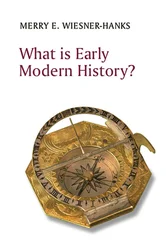R. Nisbet Bain - The Cambridge Modern History
Здесь есть возможность читать онлайн «R. Nisbet Bain - The Cambridge Modern History» — ознакомительный отрывок электронной книги совершенно бесплатно, а после прочтения отрывка купить полную версию. В некоторых случаях можно слушать аудио, скачать через торрент в формате fb2 и присутствует краткое содержание. Жанр: unrecognised, на английском языке. Описание произведения, (предисловие) а так же отзывы посетителей доступны на портале библиотеки ЛибКат.
- Название:The Cambridge Modern History
- Автор:
- Жанр:
- Год:неизвестен
- ISBN:нет данных
- Рейтинг книги:4 / 5. Голосов: 1
-
Избранное:Добавить в избранное
- Отзывы:
-
Ваша оценка:
- 80
- 1
- 2
- 3
- 4
- 5
The Cambridge Modern History: краткое содержание, описание и аннотация
Предлагаем к чтению аннотацию, описание, краткое содержание или предисловие (зависит от того, что написал сам автор книги «The Cambridge Modern History»). Если вы не нашли необходимую информацию о книге — напишите в комментариях, мы постараемся отыскать её.
The first series was planned by Lord Acton and edited by him with Stanley Leathes, Adolphus Ward and George Prothero.
The Cambridge Modern History Collection features all five original volumes:
Volume I: The Renaissance
Volume II: The Reformation, the End of the Middle Ages
Volume III The Wars of Religion
Volume IV: The 30 Years' War
Volume V: The Age of Louis XIV
The Cambridge Modern History — читать онлайн ознакомительный отрывок
Ниже представлен текст книги, разбитый по страницам. Система сохранения места последней прочитанной страницы, позволяет с удобством читать онлайн бесплатно книгу «The Cambridge Modern History», без необходимости каждый раз заново искать на чём Вы остановились. Поставьте закладку, и сможете в любой момент перейти на страницу, на которой закончили чтение.
Интервал:
Закладка:
Josephus, as we have seen, was known during the medieval period through the medium of ancient Latin versions. As late as the year 1524, indeed, doubts were expressed by scholars as to whether the Greek originals of his writings were still in existence. Many editions in Latin were produced from about 1470 until 1544. One of these (that of Basel, 1537) had been superintended by Erasmus. In 1544 the first Greek Josephus appeared-also at Basel, and from Froben’s press. The text was supplied mainly by a manuscript, then the property of Diego Hurtado Mendoza, which, with other of his books, found a home in the Escurial. An Orleans edition, printed in 1591 by de la Roviere, also gave the Greek text. Exactly a century later Thomas Ittig superintended a Leipzig edition, and Edward Bernard issued a portion of one at Oxford.
We may next say something of the apocryphal literature; and in so doing we will confine ourselves to that connected with the New Testament. The Old Testament pseudepigrapha, other than those which were circulated with the Vulgate or the Septuagint-the Fourth Book of Esdras, for example, or the Prayer of Manasses-were almost wholly unknown during our period; of the one really important exception, the Testaments of the Twelve Patriarchs, we have already spoken. On the other hand there were spurious Gospels, Epistles, and Acts of Apostles which continued to influence popular imagination and sacred art both in East and West. The Gospel of Nicodemus, so-called, the letters of Paul and Seneca, the correspondence of our Lord with Abgarus of Edessa, had never been forgotten. Narratives of the Infancy of the Virgin and of Christ enjoyed a certain repute; and the fabulous Passions of the Apostles were taken seriously by the mass of readers.
The first document of this class which had been previously unknown to the West was the important so-called Protevangelhim. This had been brought from the East by Guillaume Postel, who insisted that it was a genuine work of James, the brother of the Lord, and contained authentic history; for these assertions he was soundly castigated by Henri Estienne, who seems to have suspected, wrongly, that Postel himself was the author. The book was printed in Latin in 1552, and in Greek in 1563 by Michael Neander in the first collection ever made of Christian Apocrypha. Grynaeus1 Orthodoxographa of 1569, and Glaser’s Apocrypha of 1614 are the only subsequent collections of texts which deserve mention before 1703. In that year appeared the Codex Apocryphus of John Albert Fabricius, eclipsing all previous attempts, and still an indispensable authority on the subject of the spurious Christian literature.
The next group of writings to be considered are those conventionally classed as the Apostolic Fathers; that is, the Epistles of Barnabas, Clement, Ignatius, and Polycarp, and The Shepherd of Hermas. Occupying a place midway between them and the Apocryphal literature are the pseudo-Clementine Recognitions and Homilies, the Apostolic Constitutions, and the Liturgies current under the names of various Apostles. We will notice them in order.
It was long before the two first-named authors made their appearance at all: Barnabas, at Paris in 1645, in a posthumous publication of Hugues Menard superintended by Dachery; Clement, in 1633 at Oxford, edited by Patrick Young.
The letters of Ignatius-extant, as is well known, in two recensions, one copiously interpolated-were known in Latin versions in medieval times: and the Letter of Polycarp was preserved with them. The longer Latin version was first printed at Paris in 1498 along with the pseudo-Dionysian works. The editor was Jacques Lefevre d’Etaples. They did not appear in Greek until 1557, when Valentine Frid (Paceus) edited them at Dillingen. About a century later (in 1644) the first great critical exposition of the vexed Ignatian question was made by Archbishop Ussher.
The bulky allegory called the Shepherd of Hermas was current, like the last-named documents, in Latin versions. The Greek original, indeed, was only discovered in the middle of the nineteenth century. The Latin appeared first in 1513 at Paris. Lefevre d’Etaples was in this instance again the editor. He rather obscured the true character of his text by discarding its old name of Pastor, and substituting one apparently of his own devising: Liber trium virorum et trium spiritu-alium virginum.
Last come the important pseudonymous works associated with the name of Clement of Rome: the two romances, called the Recognitions, and the Homilies of Clement: and the manual of ecclesiastical usages known as the Apostolic Constitutions. The first of these had been early popularised in the Latin version of Rufinus, in which form alone it has survived complete. Lefevre d’Etaples printed it first at Paris in 1504: the Homilies, which we only have in Greek, were not given to the world until 1672. Bovius and Turrianus in 1563 produced editions of the Constitutions, the former in Latin, the latter in the original Greek. The whole series of documents which we have been describing was brought together and edited in a masterly manner by J. B. Cotelier of Paris in 1672.
The Greek Apologists form a convenient class, and we may survey their destinies next. The only one who was introduced to the West in the fifteenth century was one of the obscurest, Athenagoras. Large portions of his book On the Resurrection were rendered into Latin by Ficino and also by ,G. Valla, and printed in 1488. The Greek appeared in 1541. The Apology was edited by Gesner at Zurich and by Robert Estienne at Paris in 1557.
The first portion of Justin Martyr’s works that saw the light was the Address to the Greeks, printed in the Latin version of Pico della Mirandola in 1507. In 1551 Robert Estienne brought out a corpus of this writer’s works, genuine and spurious, which for most of them- notably the two Apologies and the Dialogue with Trypho-was the editio princeps.
Tatian and Theophilus first appeared at Zurich in 1546: the unimportant tract of Hermias in 1553 at Basel. The editor of the first two was Gesner, of the third Raphael Seiler.
All the extant works of Clement of Alexandria, with a few unimportant exceptions, were placed in the hands of scholars together, in the Florentine edition of 1550, superintended by Pietro Victorio. But the best work done on the text of this Father was that of Friedrich Sylburg, who brought out his writings at Heidelberg in 1592. The printer was Commelin.
The first nine editions of Irenaeus, ranging in date from 1526 to 1567, all give a text constructed by Erasmus, and improved to a certain extent by him in those which were published during his lifetime. The Erasmian text, however, never attained a very high pitch of excellence. A step forward was taken by Gallasius, who brought out an Irenaeus at Geneva in 1570, and more decided progress by Feuardent of Paris, whose best edition was printed at Cologne in 1596. Nothing of any great importance was done for the elucidation of this writer before the publication of Grabe’s great work at Oxford in 1702.
The works of Origen, largely preserved in old Latin versions, were never wholly unrepresented in Western libraries. It is a curious fact that, in spite of the deep interest which this great thinker excited in the minds of men like Erasmus, no portion of his writings appeared in the original Greek during the sixteenth century. As early as 1475 some Homilies were printed in Latin, and the books Against Celsus, also in Latin, in 1481. A collective edition in the same language was brought out by Merlin at Paris in 1512. Erasmus was engaged on another when he died in 1536, and Beatus Rhenanus completed it in that year. Genebrard, Archbishop of Aix, produced a third in 1574. The first attempt at a complete edition in Greek and Latin was that of Peter Daniel Huet (afterwards Bishop of Avranches), which appeared at Rouen in 1668. It included only the exegetical works, and was never completed. Herbert Thorndike, of Trinity College, Cambridge, had made large preparations about the same period as Huet for a collective edition, no part of which was printed. His manuscripts, among which is the unique copy of the important treatise On Prayer, are preserved in the Library of his College. The first editor of one of the longer treatises in Greek was David Hoeschel, who published the books Against Celsus in 1605.
Читать дальшеИнтервал:
Закладка:
Похожие книги на «The Cambridge Modern History»
Представляем Вашему вниманию похожие книги на «The Cambridge Modern History» списком для выбора. Мы отобрали схожую по названию и смыслу литературу в надежде предоставить читателям больше вариантов отыскать новые, интересные, ещё непрочитанные произведения.
Обсуждение, отзывы о книге «The Cambridge Modern History» и просто собственные мнения читателей. Оставьте ваши комментарии, напишите, что Вы думаете о произведении, его смысле или главных героях. Укажите что конкретно понравилось, а что нет, и почему Вы так считаете.












